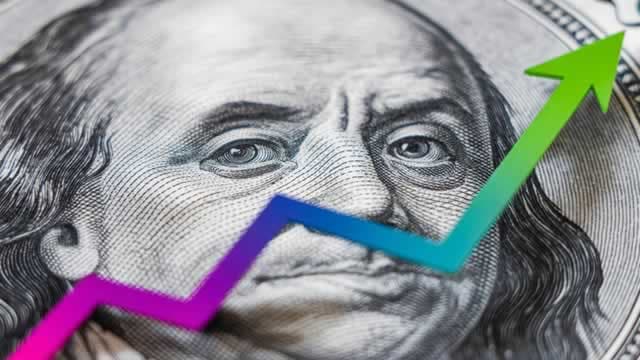加载中...
共找到 5,593 条相关资讯

CNBC's Kristina Partsinevelos joins 'Squawk Box' with the latest news.

The Federal Reserve is expected to cut its short-term rate Wednesday for the second time this year despite an increasingly cloudy view of the economy it is trying to influence.The government shutdown has cut off the flow of data that the Fed relies on to track employment, inflation, and the broader economy. September's jobs report, scheduled for release three weeks ago, is still postponed.

Ivana Delevska joins Diane King Hall at the NYSE to preview the megacap tech stocks reporting earnings this week. She says A.I.

Despite weak consumer confidence and recession fears, US consumer spending remains robust, driving economic growth and supporting new market highs. Aggregate consumer strength is underpinned by record household liquidity, low debt-to-GDP ratios, and manageable delinquency rates, especially among higher-income households.

Gary Cohn, IBM vice chair and former NEC director, joins 'Squawk Box' to discuss the state of the economy, the bifurcation of the economy, corporate earnings, state of the labor market, impact of the AI boom, state of the ongoing federal government shutdown, his thoughts on the NYC mayoral race, and more.

Kevin Green kicks off the trading day with his eyes overseas. He's watching developments with China ahead of Pres.

Cooler CPI reset Fed path: Softer inflation pushed odds of earlier rate cuts higher, knocking 10-year Treasury yields lower across the curve.

Ever since the challenges of the COVID-19 pandemic, a key headwind that has stymied multiple administrations is inflation. Sure, the economy has been able to bounce back from the worst of the crisis, but the response wasn't free of consequence.

Investors are familiar with the seasonality adage ‘Sell in May and Go Away.

As the third quarter of 2025 ended, the market capitalization of the S&P 500 added up to $59.32 trillion. Four weeks later, Slickcharts estimated the total market cap of the index adds up to $62.25 trillion.

Traditional debt involves a real constraint. A company borrows money it does not control and must earn or arrange to repay later. But when a government issues debt in a currency it controls, repayment is never the real problem. The real limits are political and economic: too much issuance can erode confidence or spark inflation. The real question isn't whether the U.S. can pay, but what those dollars will be worth when it does.

As of Oct. 29, 2025, two stocks in the energy sector could be flashing a real warning to investors who value momentum as a key criteria in their trading decisions.

During times of turbulence and uncertainty in the markets, many investors turn to dividend-yielding stocks. These are often companies that have high free cash flows and reward shareholders with a high dividend payout.

The current market is expensive and vulnerable, with private credit emerging as a significant, underappreciated risk. Despite these risks, I remain bullish on the market, favoring cyclical sectors, AI beneficiaries, and select private credit firms, while urging prudent risk management.

The top headlines that could drive today's trading.

What matters in U.S. and global markets today

Daniel Zhao, Senior Economist at Glassdoor, discusses rising layoffs, a weaker labor market driven by lower immigration, and why AI is reshaping tasks but not eliminating jobs entirely.

RaeAnn Mitrione, Investment Management Partner at Callan Family Office, discusses AI-driven market momentum, earnings concentration, and why investors should diversify amid potential volatility.

Listen on the go! A daily podcast of Wall Street Breakfast will be available by 8:00 a.m.

Dow futures are trading in green on Wednesday, buoyed by optimism surrounding ongoing AI advancements and strong corporate earnings, especially in the tech sector. Investors await the Federal Reserve's highly anticipated policy decision, with a widely expected 25-basis-point rate cut.